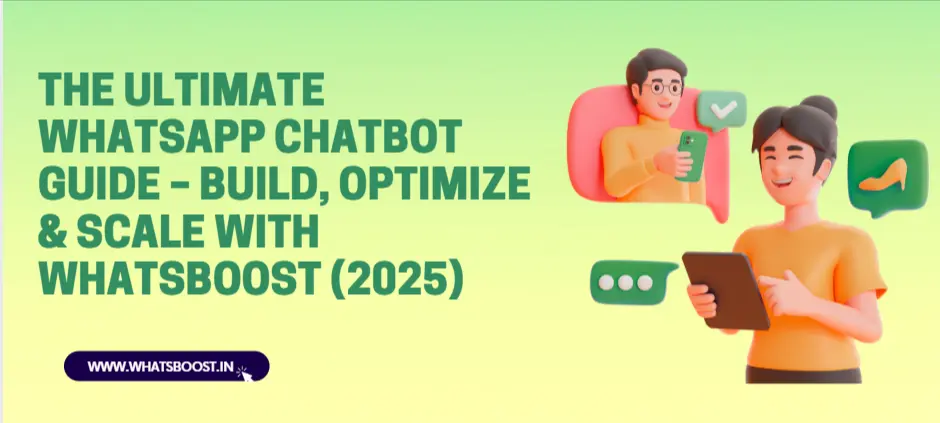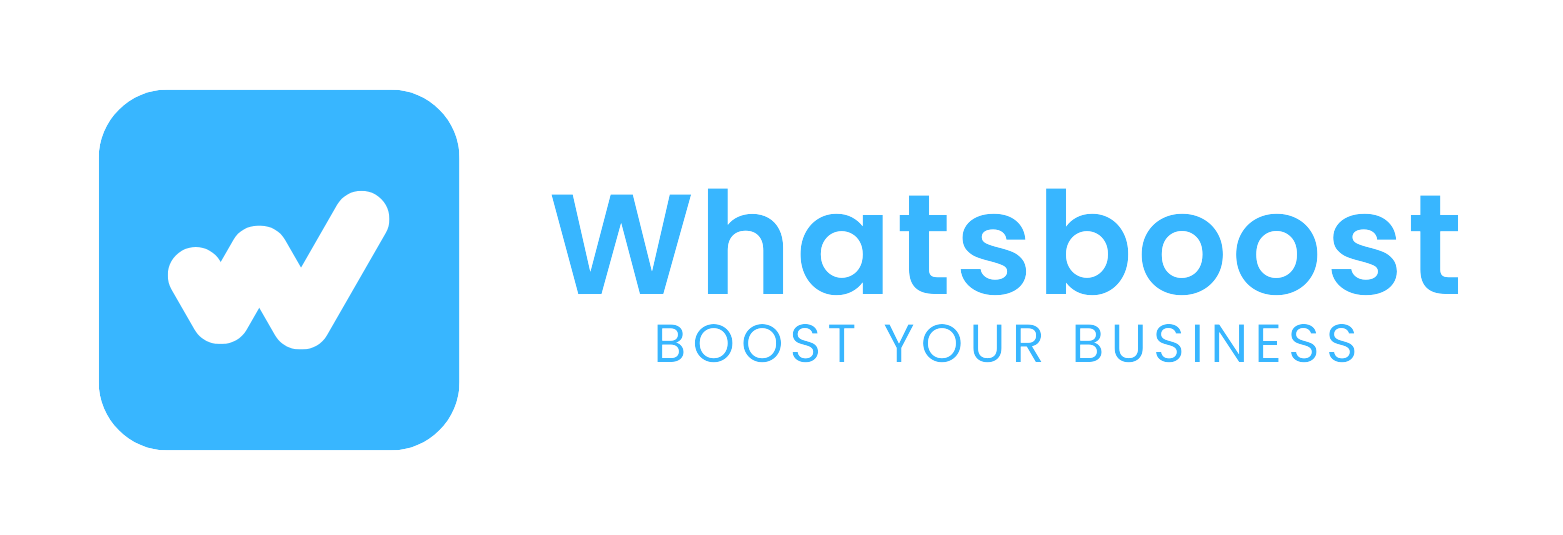
The Ultimate WhatsApp Chatbot Guide: Build, Automate & Grow in 2025
Unlock WhatsApp chatbots for business success in 2025. This Whatsboost guide covers step-by-step setup, automation, real-world bot strategies, and expert best practices. For growth-minded companies ready to lead in digital engagement.
Instant messaging has reshaped how brands connect with audiences. With over 2.8 billion users and an average user spending upwards of 40 minutes daily on WhatsApp, the platform has become a cornerstone of business communication. At the heart of this transformation lies the WhatsApp chatbot—a tool that makes instant, reliable, and scalable engagement a reality for organizations of all sizes.
Studies indicate that over 80% of customers expect a reply within the first hour of reaching out to a business, but manual support can’t keep up. Companies that automate see not just cost savings, but a measurable jump in customer satisfaction, conversion rates, and loyalty. Strategic deployment of WhatsApp chatbots, using advanced platforms like Whatsboost, sets brands apart in the increasingly competitive digital marketplace.
Chapter 1: What Is a WhatsApp Chatbot & What Does It Do?
A WhatsApp chatbot is a virtual assistant powered by artificial intelligence and set conversation flows, operating within your business’s WhatsApp channel. These bots respond to queries, provide recommendations, process orders, qualify leads, and offer real-time support—24/7—without human supervision.
Key Advantages of WhatsApp Chatbot Adoption
24/7 Support Across Time Zones
Serve customers worldwide, at any hour, no matter the size or location of the support team.Instant Lead Qualification
Capture and segment leads immediately via bot interaction, reducing missed opportunities.Hands-Free Order Tracking & Notifications
Keep customers updated and engaged, even when staff are unavailable.Hyper-Personalized Marketing
Automate the delivery of offers, content, and product suggestions tailored to each user.Cost Efficiency
Automation safely reduces up to 80% of service costs, freeing resources for complex queries.
Chapter 2: How to Build a WhatsApp Chatbot—A Modern Blueprint
Step 1: Select a Feature-Rich Platform
Whatsboost provides a drag-and-drop visual builder, easy CRM or payment integration, scheduling for broadcasts, and in-depth analytics—combining the ease of no-code tools with enterprise-grade performance.
Step 2: Connect Your Business Account
Small businesses can start with the WhatsApp Business App, but scaling brands benefit from the power and security of the WhatsApp Business API. Whatsboost assists in setting up and managing API compliance and verification, ensuring seamless onboarding.
Step 3: Map Out Real Customer Journeys
Develop logic flows for key goals. Every flow should:
Greet and offer simple menu options via buttons or reply prompts.
Resolve the majority of inquiries or redirect complex issues to humans instantly.
Collect relevant data, provide helpful content (like FAQs or videos), and request feedback.
Example for E-commerce:
“Track my order” triggers bot response requesting Order ID.
The bot checks integrated systems and updates with status.
An immediate fallback to a human if details cannot be found.
Step 4: Launch, Test, Improve
Begin with a small segment. Measure drop-offs, monitor unresolved queries (“fallbacks”), and use A/B testing on message language. Analyze results and refine—continuous improvement is crucial as customer needs, language trends, and business priorities evolve.
Step 5: Enforce Compliance and Transparency
Adopt best practices for privacy:
Clearly request opt-in before automated outreach.
Maintain simple opt-out pathways.
Adhere to WhatsApp’s ever-evolving policies to keep communication trusted and legally sound.
Chapter 3: Advanced WhatsApp Chatbot Use Cases by Industry
E-Commerce
Abandoned cart recovery and instant incentives.
Personalized product recommendations and restock alerts.
Payment links or in-chat checkout.
Real Estate
Virtual property tours.
Automated lead routing and appointment scheduling.
Quick document and brochure delivery.
Healthcare
Appointment bookings and reminders.
Result notifications and symptom screening.
Wellness tips or vaccination alerts.
Educational Services
Course information delivery and enrollment assistance.
Automated application reminders.
FAQ and schedule updates for parents and students.
SaaS & Technology
AI-driven qualification of demo or trial requests.
Automated onboarding sequences.
Push notifications about product updates or feature enhancements.
Hospitality and Travel
Real-time booking confirmations and updates.
Chat-based concierge services.
Upselling room upgrades or special packages.
Chapter 4: Optimization and Best Practices for 2025
1. Give Your Bot a Unique (But Professional) Voice
Bots should project your brand personality. Use a friendly but clear tone, avoiding jargon and maintaining accessibility for a global and diverse audience.
2. Combine Human and Automated Touch
Don’t over-automate customer journeys. Offer live agent handoff promptly when the bot hits limitations. The seamless blend of AI and empathy maximizes satisfaction.
3. Use Visuals and Rich Content
Enhance clarity with videos, carousels, PDFs, or payment buttons. Visuals increase retention and reduce back-and-forth.
4. Personalize at Every Stage
Use customer data (with permission) to tailor offers, address by first name, reference prior interactions, and adapt timing based on user engagement patterns.
5. Respect Frequency and User Choice
Limit the number of automated messages and base triggers on intent, not just time. Always provide opt-out in an easy, transparent way.
6. Monitor Analytics and Iterate
Track metrics like unresolved queries, engagement rate, conversion, and overall customer sentiment. Revisit flows monthly for optimization.
Chapter 5: Beyond Basics – Avoiding Common Mistakes
Ignoring Onboarding:
A poor welcome flow can confuse and frustrate first-time visitors. Guide each conversation clearly from the start.Letting Bots Loop:
Never trap users in endless cycles. Always provide a path to human support.Overloading with Messages:
Irrelevant or too frequent messages erode trust. Content and timing must be carefully managed.Failing to Update:
As products, offers, and FAQs change, always update the bot’s knowledge and scripts.
Chapter 6: The Whatsboost Edge in 2025
Using Whatsboost, brands can:
Create fully customized bots with no code, integrating payment, CRM, and campaign management in one place.
Use visual analytics and conversation mapping for deeper insights.
Launch new campaigns in moments and scale support as the business grows.
Stay up-to-date and compliant with changes in WhatsApp’s platform.
Conclusion: The Future of Customer Conversations
WhatsApp chatbots have moved from novelty to necessity. In 2025, businesses that automate responsibly can deliver rapid support, increase sales, and build memorable customer journeys. The right strategy, paired with advanced tools like Whatsboost, empowers organizations to transform messaging into their most valuable channel for growth.
Now is the time to adopt, refine, and scale WhatsApp chatbot automation—creating meaningful touchpoints, fostering loyalty, and keeping your business ahead in the new era of digital conversation.
